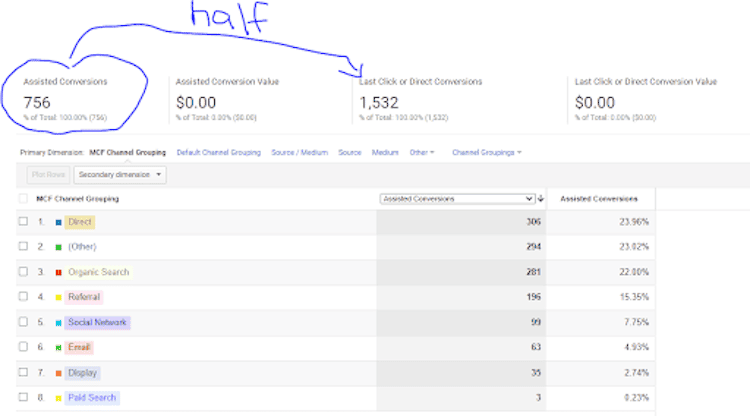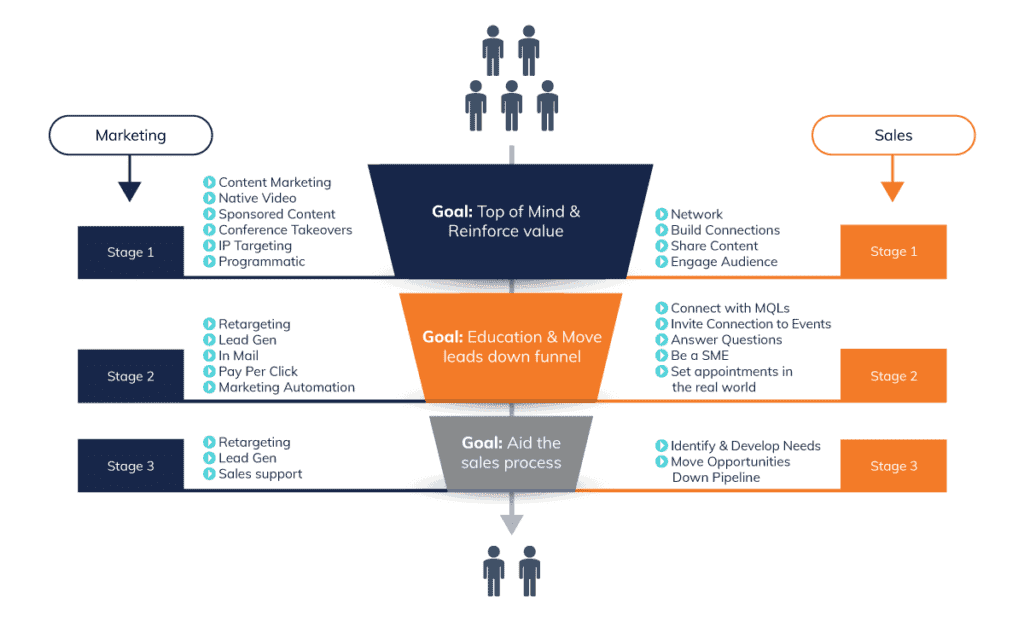
Developing Key B2B Marketing Metrics That Matter
B2B Marketers know that metrics are the foundation of any successful marketing campaign. However, not all metrics are created equal. This article will provide 7 best practices you can apply immediately in developing key B2B marketing metrics that matter. Identifying the right marketing metrics play an important role in the overall marketing strategy you have in place for your business. By implementing the following best practices within your company, you can make better choices, effectively optimize campaign performance, and validate that your investments in marketing are working.
What are Marketing Metrics?
One of the most important elements of any campaign, marketing metrics are the data points gathered to monitor and measure the performance of a marketing campaign. Marketers need to align their marketing metrics to an overarching strategy for the metrics to offer value. Once aligned, these metrics can be used to make actional improvements and optimizations to a specific campaign.
Why Do Marketing Metrics Matter?
Using strategic metrics to measure the effectiveness of your marketing campaigns has several benefits, including:
- Providing you with data to support informed decision making
- Highlighting which channels provide the highest ROI
- Justifying marketing spend and overall budget allocations
- Providing marketers with accountability
- Showing what’s working and what’s not working
- Enabling better resource allocation
- Ensuring continuous alignment with strategic goals
How Do You Measure the Metrics that Matter?
Marketing metrics can be grouped into two different categories – quantitative or qualitative indicators.
Quantitative Metrics
Quantitative indicators refer to the most straightforward KPIs that are measured solely by a number. Quantitative indicators can be easily tracked and measured, often using tools such as Google Analytics. Quantitative metrics show what tactics and channels captured demand and the path the user took to convert.
Qualitative Metrics
Qualitative indicators, on the other hand, refer to metrics that cannot be measured by numbers. Typically, a qualitative KPI is a characteristic of a process of receiving input from others. Qualitative indicators can tell you where your target audience is taking an interest in you, whether that be through word of mouth or on a social media platform. Another form of measuring qualitative indicators is win/loss analysis, which refers to the process of studying past business deals to evaluate why sales opportunities became wins or losses. Qualitative metrics show what created demand by identifying what channel most influenced the user to convert.
What Are the B2B Marketing Metrics That Matter and Which Don't
When running a demand generation marketing campaign, these are the key metrics that you want to pay attention to. It’s important to look at your metrics from a blended perspective vs. getting too granular.:
- The overall results from the campaign
- Cost per acquisition (CPA) / Customer acquisition cost (CAC)
- Closing rates
- Higher conversion rates from landing page or demo form
- Website heat maps
- Marketing-qualified leads (MQLs) based on your definition
- MQLs to Sales-qualified leads (SQLs)
- MQLs to sale
- Time from the opportunity to sale
- How did you hear about us input from prospects
Just like marketers need to know which marketing metrics matter, they also need to know which metrics don’t matter. The following vanity metrics are less important when measuring the success of your marketing campaign:
- Gross leads. The volume of leads is not important;, the quality of leads is what matters
- Engagement metrics are not as important as they once were
7 Tips to Develop the Key B2B Marketing Metrics that Matter
Tip 1: Focus on the outcomes more than the channel
It is better to focus on outcomes more than channels because effective digital marketing requires multiple touches before a prospect is ready to take the next step. Not all of these touches are easy to measure. Maybe the prospect’s last touch before filling out a demo request form was by conducting a search on Google. Prior to that, they may have seen a social post or heard about your company on a Podcast. The key here is looking at the big picture outcomes like ‘did we get more qualified leads when this campaign was running’ vs. just looking at what channel/tactic produced the actual lead.
In the chart below, you can see that half of our conversions originated from other channels before they converted. This is why you must look at the big picture and focus on incremental improvement across all of your channels over time.

Tip 2: Keep your conversion tracking high-level
When tracking metrics, marketers tend to track every single asset as a conversion event, which can easily be hundreds of pieces of content. Instead, optimize your conversion tracking by keeping it high-level. For example, at Vende Digita,l we track 3 conversion events; Resource Downloads, Consultation Requests, and Event Registrations. Everything we offer can fit into one of these 3 conversion events. This will make for easier tracking and seeing the big picture.
Here is a screenshot from our Google Analytics showing how our conversions are lumped into 3 buckets:

Tip 3: Standardize and optimize your UTMs
A UTM is a simple code that can be attached to any URL to generate tracking data for digital campaigns. UTMs help track the progress of campaigns across all online platforms, as well as aid in your marketing automation, CRM functioning, and running effective reports. It’s important that you develop a standard for how UTMs are built to have consistent data that can offer helpful insights. Marketing attribution is hard and a lack of consistency in your UTMs will only make it harder.
Here are the UTM standards we use at Vende Digital:
- Be consistent (caps, “-” “_”)
- Source=Channel (i.e., Google, LinkedIn, YouTube, etc.)
- Medium = Tactic (i.e., PPC, Sponsored, InMail, Display)
- Name = Offer (i.e., Webinar, eBook, Content, Demo)
- Content = Recipe for AB testing (version-A, version-B)
- Use the Google Analytics UTM builder for consistency
Tip 4: Don’t include your testing budget
Earmark 5-10% of your digital media budget for testing new things. The objective of testing is to learn. Learning what doesn’t work is just as valuable as learning what does work. Therefore, test campaigns should not be counted in marketing results since they are meant to be utilized to explore new channels and tactics.
Tip 5: Clearly define your pipeline stages
Each step in your sales process should have clearly defined metrics or objectives that must be achieved. Use tools like Google Analytics, HubSpot, SharpSpring, Salesforce, and Pardot to keep track of every stage of the customer journey. Here are some important stages and goals to consider for each stage.

Tip 6: Utilize custom conversions
Custom conversions are a way for marketers to define a conversion event on channels for tracking and optimization. In other words, using custom conversions will allow you to track and optimize specific conversions. This is especially helpful on sites like LinkedIn. Adding custom conversions can allow you to see conversions that happen after someone saw one of your ads, even if they didn’t click on the ad.
Tip 7: Pay attention to individual ad performance
Ads are the best way to generate awareness for your business. However, there are some important metrics to monitor to optimize ad campaigns. We have found the most important aspects to monitor are:
- Reach Goal: >50% of targeted audience
- Frequency Goal: >3
- Time on Site Goal: >1 minute
- Pages / Session Goal: >2
Cost Per Result Goal: This will be relative to other ads or campaigns.
How Can We Help?
Vende Digital is a digital partner for B2B Marketers. We believe that every B2B marketing leader should have a digital strategy and trusted partner that can deliver leads consistently. Our services are built upon a proven framework that turns targeted prospects into sales opportunities. We’ll take the time to learn about your business and give you an action plan to achieve your goals. Contact us today to schedule a complimentary Discovery Meeting, and let us show you how to grow your B2B traffic.
Key Takeaways
- Key B2B marketing metrics provide invaluable data that can be mined to grow your business and increase revenue.
- Not every metric will be important, and what needs to be tracked will vary from campaign to campaign.
- Measure both quantitative and qualitative indicators for better, more useful insight.
- Focus on the blended outcome of your go-to-market efforts, not the channel that was utilized.
- Monitor ad performance, and fine-tune ads to better reach your target audience.







